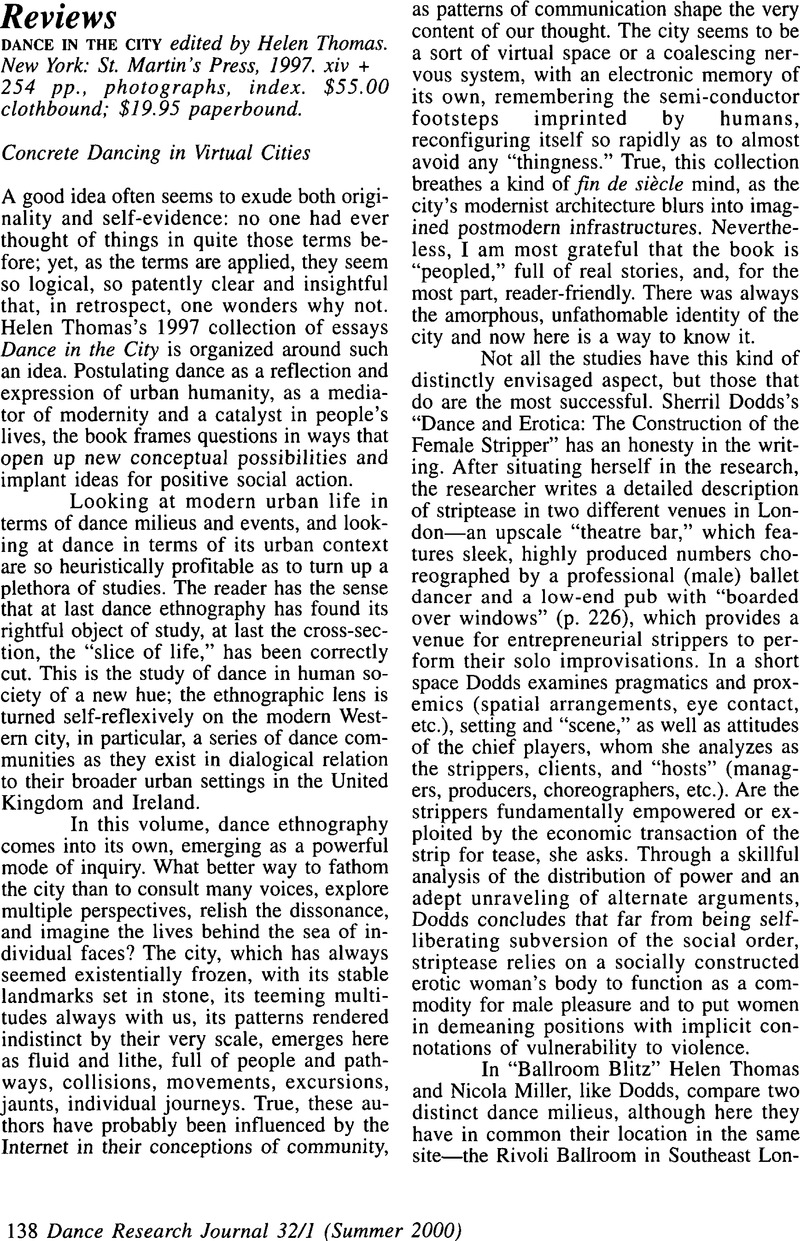No CrossRef data available.
Published online by Cambridge University Press: 22 July 2014

1. For a full treatment of this paradigm see Lather, Patti, Getting Smart: Feminist Research and Pedagogy with/in the Postmodern (New York: Routledge, 1991)Google Scholar.
2. This volume is a sequel to Dance, Gender and Culture, ed. by Thomas, Helen (New York: St. Martin's Press, 1993)Google Scholar, which has a similar orientation. See also Meglin, Joellen A., “Feminism, the Academic Moment, and Research Rigor,” rev. of Dance, Gender and Culture, in Dance Chronicle: Studies in Dance and the Related Arts, vol. 20, no. 1 (1997): pp. 87-98.Google Scholar
3. Novack, Cynthia, “Ballet, Gender and Cultural Power,” in Dance, Gender and Culture: pp. 34-48Google Scholar; Taylor, Virginia, “Respect, Antipathy, and Tenderness: Why Do Girls ‘Go To Ballet’?,” Proceedings of the Society of Dance History Scholars Twenty-Second Annual Conference, June 1999, Albuquerque, New Mexico.Google Scholar
4. Analysis of children's ballet fictions also appears in McRobbie, Angela's “Dance Narratives and Fantasies of Achievement,” in Desmond, Jane C., ed., Meaning in Motion: New Cultural Studies of Dance (Durham: Duke University Press, 1997): pp. 207-31.Google Scholar
5. Sayers, Lesley-Anne, “‘She might pirouette on a daisy and it would not bend’: Images of Femininity and Dance Appreciation,” Dance, Gender and Culture: pp. 164-183.Google Scholar
6. This construct derives from Douglas, Mary's Purity and Danger: An Analysis of the Concepts of Pollution and Taboo (London: Routledge & Kegan Paul, 1966).CrossRefGoogle Scholar